Dabbing seems much more intimidating than smoking weed. There’s a lot of stuff involved — compared to just flicking a lighter over a glass pipe, dabbing can feel like prepping for surgery at times.
Torches, dabbers, nails, carb caps… it’s enough to make a newbie just skip it entirely and go buy an overpriced $60 vape cartridge to scratch their concentrate itch. Don’t let this be you!
We have prepared a handy guide to everything you need to get the most out of your concentrate experience and help you understand what all the fuss is about. Here are the five essentials for dabbing:
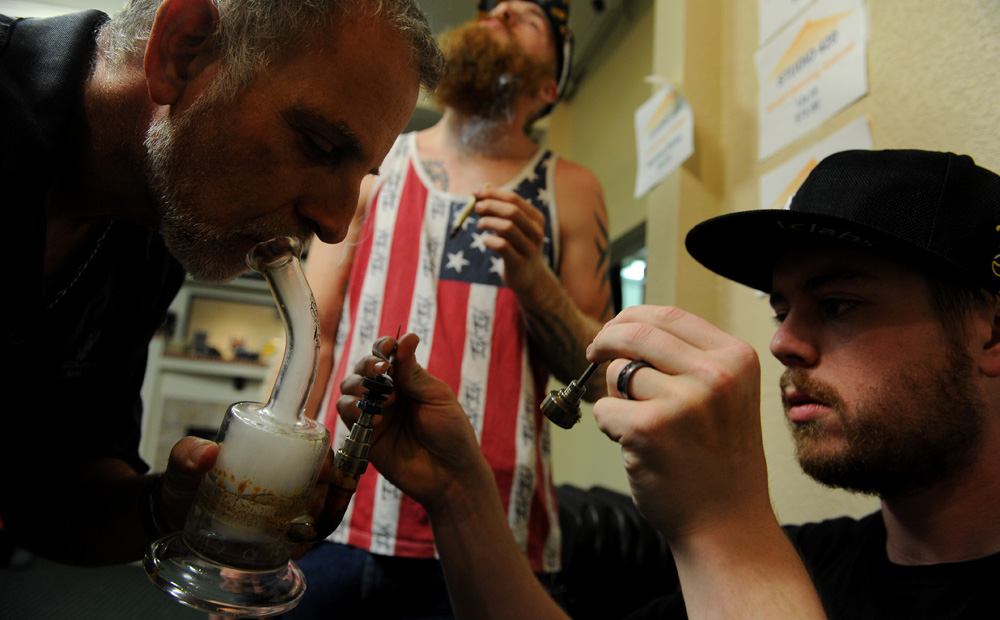
1. A Dab Rig
This is probably the most important part of the equation, as there is literally no way to dab without it. When we say “dab rig” (a.k.a. oil rig), we are referring to the modified water pipe that has become the go-to for dabbing. Instead of a connector for a typical glass bowl like you’d have on a bong or bubbler, you have either a male or female glass joint (14 mm or 18 mm usually) which is intended to hold a nail (more on that later). This allows you to heat up the nail and place the concentrate onto it, which causes vaporization.
The most important things to consider when buying a rig are function, water volume, portability and durability. Whether you want a tiny little rig that fits in the palm of your hand or a hulking behemoth intended to sit on a coffee table as an art piece, it really comes down to personal preference. Smaller rigs with less water will give a more direct hit with lots of flavor, while larger, more ornate rigs with higher water volumes tend to provide smoother hits with a slight loss of flavor. Be mindful of the design of the rig, because anything top-heavy will likely take a spill at one point or another. So if you are dabbing in a higher-traffic environment, look for something low-profile with a heavy, sturdy base and thick walls.
Concentrates 101
Part 1: What’s on the market? Info about kief, BHO, water hash and more
Part 2: How should I smoke this shatter? There are many ways to consume concentrates
Part 3: Are concentrates right for me? What you need to know about potency, expected effects and more
You can find rigs at any head shop as well as a variety of online retailers. One suggestion: Go to a quality glass shop where they will let you try the piece with water inside of it. Although you won’t get to test it with a concentrate, you can actually see how it feels, because some people prefer a very easy pull and others like a little bit of resistance. Pricing varies, starting as low as $30 for the cheapest, tiny, Chinese-made production rigs (stay away from those if you can afford to). Mid-grade options run $75-$250 or so for most American-made production glass. Costs can run up well into the high hundreds, thousands and even tens of thousands of dollars for one-of-a-kind pieces by the leading glassblowers, many of which could sit in museums. One thing is certain: there is definitely a perfect oil rig out there for you, it just may take some trial and error.
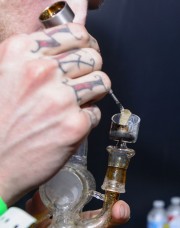
2. A “Nail”
There are two main types of nail on the market these days, domeless titanium nails or quartz nails, often called “bangers.” Stay away from borosilicate glass nails entirely, as they break easily and can shatter under intense heat, which could be dangerous. The term “domeless” just refers to the early generations of nails, which required a glass dome to surround them and catch the vapor. The industry has since mostly moved away from this setup, which requires additional pieces and coordination, in favor of the domeless arrangement, in which the vapor is sucked through a hole or slit down into the rig.
There is definitely a debate in the concentrate community about whether titanium or quartz is the better choice for dabbing. In my opinion, they are mostly interchangeable, but many connoisseurs swear by quartz as the surface of choice for the best flavor and also because of concerns about titanium oxidation at high temperatures as titanium nails degrade with improper use. Also available are more advanced composite versions that are both titanium and quartz, which seem to be getting rave reviews for truly being the best of both worlds. In general, though, titanium is more durable than quartz, which can break if it was improperly made or was just dropped onto a hard surface — if you’re spending $50-$150 on a nail, maybe opt for titanium if you’re extra clumsy. Quartz nails are more expensive in general ($75-$200). Again, there are Chinese options that can be as low as $30; if you go that route, buy a few of them because they will break eventually.
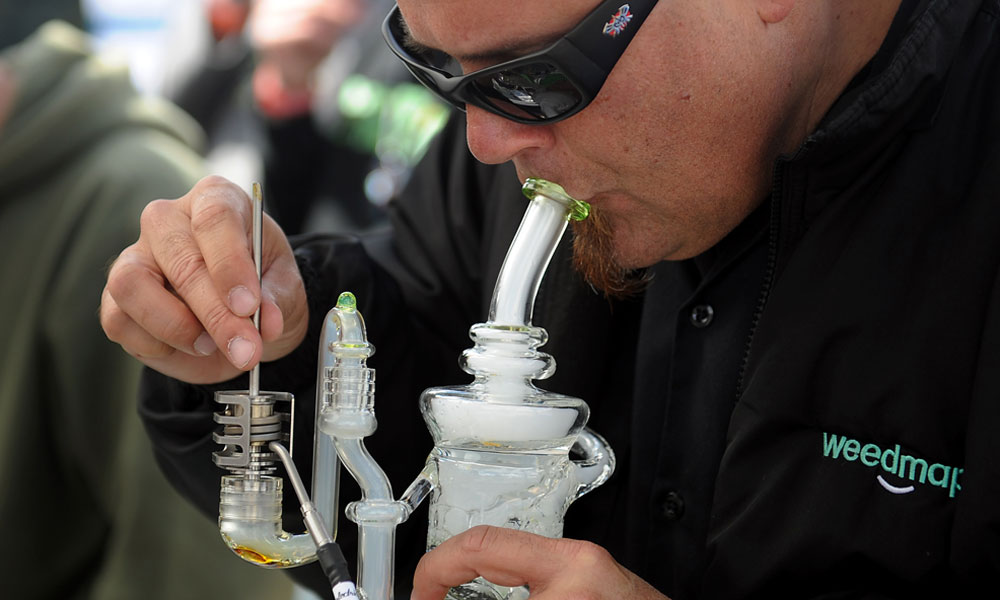
3. Carb Cap Dabber
The days of the cheap artists’ clay-sculpting implements or dental tools used as dabbers are long past — the carb cab + dabber combo is the way that most veteran concentrate consumers have gone in the last two years. The dabber part of the equation is simple: You just need an implement to get your concentrate onto the surface of the hot nail.
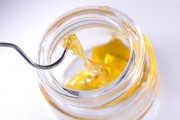
The dabber of choice depends on whether you consume dry, crumbly concentrates or those that tend to stick to the dabber (i.e. sap, shatter, soft budder). Dry concentrate is easier to scoop, so opt for a wider, spoon-like dabber; if you primarily dab shatter or oils, you can get one that is more like a flathead screwdriver or a ballpoint tip.
The carb cap is an essential piece for those looking to maximize their flavor retention when dabbing. After heating up the nail, it’s best to allow it to cool a bit before dabbing so you’re not sucking down 900-degree vapor. The carb cap allows you to let it cool more than you would be able to otherwise because when applied, it serves to cover the nail’s surface, creating an oven-like environment in which the concentrate will vaporize more easily. This means you can dab at 550-600 degrees instead of at 700+, which allows you to capture more of the volatile terpenes (i.e. smell and flavor) which would be lost at higher temperature.
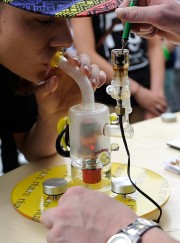
4. Dab Rag/Mat
Though you can certainly dab without these things, your house will possibly become a sticky nightmare, coated in oil that spatters off the nail, stray dabs that fell and immediately stuck to the table, etc. These days, many companies make custom-designed dab mats that can also serve as a place to wipe off your dabber.
Getting a washable one is advised (you’ll probably need to soak it in isopropyl alcohol to really clean it fully) and make sure it’s large enough for your rig to sit on top of while having enough elbow room to accommodate dabbers, containers of concentrate, etc.
The mat (which is generally an oversized mousepad) is primarily to keep your rig from breaking in the event it gets knocked over, but it also can protect the surface underneath from stains. A silicone baking sheet from a housewares shop would also do the trick.
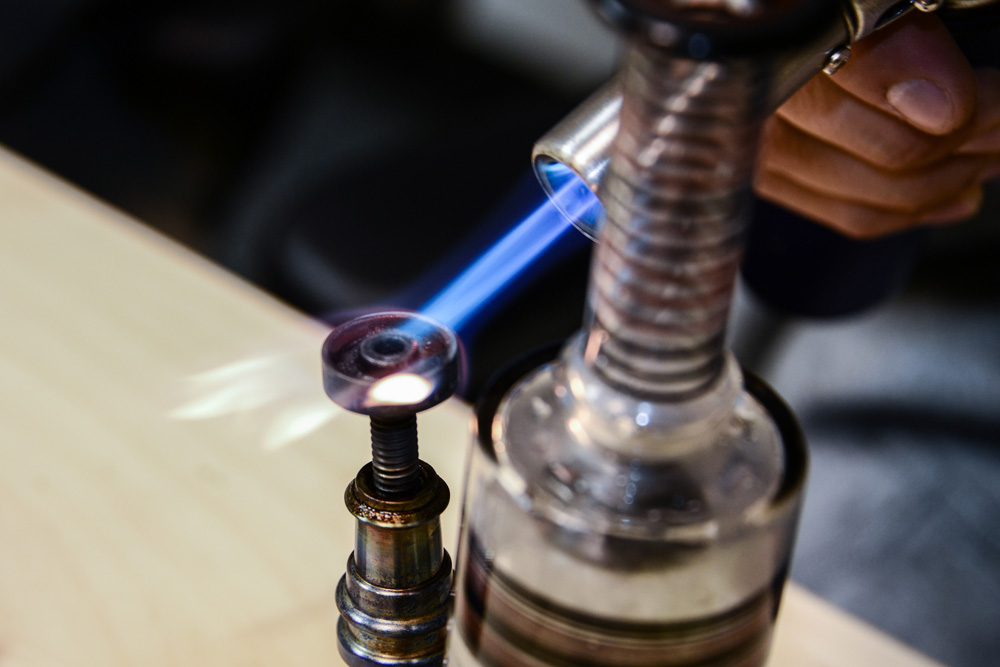
5a. Torch
This is probably the scariest part of the dabbing experience for the uninitiated. Heating a piece of glass or metal with a torch conjures up unsavory images of all kinds of other drugs, but it is a begrudgingly necessary part of the experience for those who don’t have $250-plus to spend on an e-nail. Go to your local head shop or home store and look for a culinary-style torch that stands up on its own, generally of medium size, with a strong enough flame to get the surface red-hot but no giant metal barrel (those get extremely hot to the touch). Torches run $30 to $100 depending on size and quality. Remember to purchase some refill butane, as they are not filled at the stores. Perhaps the primary and undeniable bonus of going the torch route is you can caramelize the top of a crème brûlée and then enjoy it after a dab sesh.
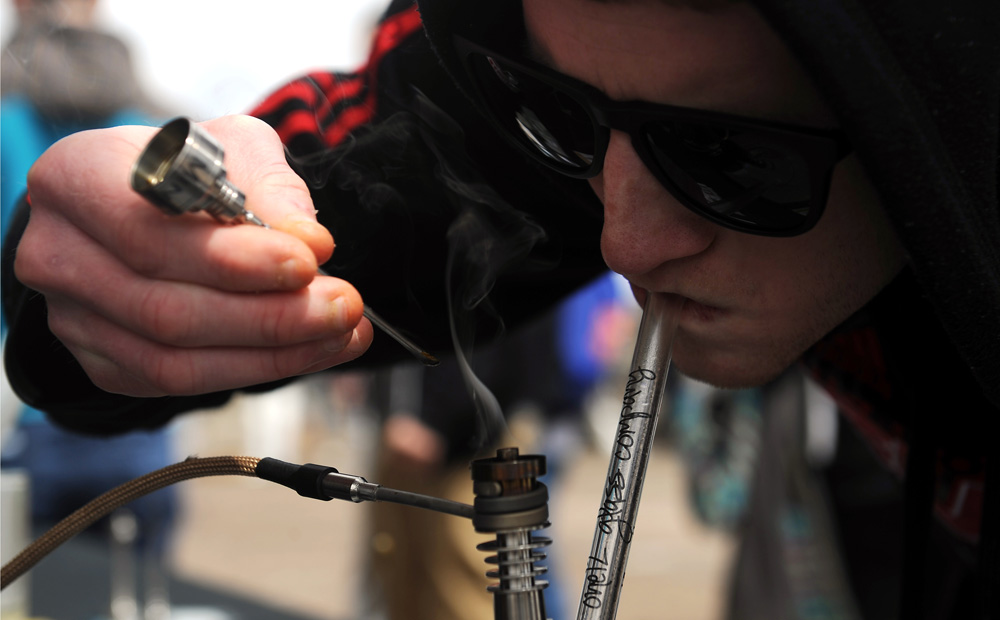
5b. E-Nail
This is only essential for those who really love concentrates and the incredible flavors they can provide and are willing to invest a little bit more to get the best experience possible. Instead of using a torch to heat the nail, an e-nail (a.k.a. “electronic nail”) works as a consistent, adjustable heat source that keeps your nail at a constant desired temperature.
The key advantage of an e-nail over a torch is that you can truly customize your dabbing experience — if you are looking to get every last morsel of concentrate in a strong, supremely potent vapor, you can leave it around 700 degrees, while if you are looking for a smooth, super flavorful hit, you can set it as low as 500 degrees and use a carb cap. Keep in mind that lower temperatures often mean you don’t fully vaporize your concentrate, so if seeing a puddle of oil being wasted kills you and your wallet, make a compromise and go to 625 or so.
Useful weed resources
Favorite strains: 25 ranked reviews from our marijuana critics
Follow The Cannabist on Twitter and Facebook
The only real disadvantage of an e-nail — aside from the extra price and limited compatibility with existing nails — is that it is not portable and has to be plugged into an outlet. Resourceful stoners have now started using backup batteries (like the ones you would take on a trip to charge your phone between stops) to power their e-nails. So, if you see some guy in the woods, crouched with a backpack blowing out giant vapor clouds, that’s what’s up.
A variety of companies make these, and you can now find them for as cheap as $150 for a made-in-China version — you generally get what you pay for with these, though, and the recommendation is to go with a model from a reputable company, which will set you back more like $250-$300.
Now, Get to Dabbing!
So whether you are looking to go the cheapest, easiest possible route to dabs or take the longer, more satisfying road that involves added equipment and expense, there is an answer out there. If you’re lucky enough to have friends who dab regularly, get their opinions on the rigs and nails that they’ve used and look at it through your own lens. Dabbing is as personal and customizable as a smoking experience gets, so feel free to experiment and you’ll surely find a combination that meets your needs.
On The Cannabist Show: What’s the one thing every dabber needs?





